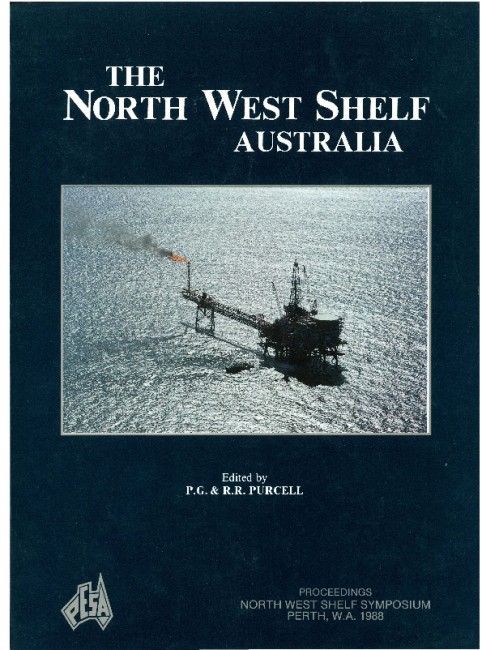Publication Name: The North West Shelf Australia
Authors: R.M. Hocking, J.W.K. Voon and L.B. Collins
Date Published: July 1988
Number of Pages: 33
Reference Type: Book Section
Abstract:
Sands at the base ofthe Winning Group, immediately beneath the Muderong Shale, can be assigned to three broad groups, on the basis of core, outcrop and electric log data. The groups are distinct lithofacies associations, and correspond to established stratigraphic units in the Carnarvon Basin.The Mardie Greensand is mainly a richly glauconitic greensand which formed in an offshore, marine-shelf setting. A secondary group of glauconitic pebbly sandstone and claystone formed by debris flows in a trough in the central Barrow Sub-basin. The distribution of the Mardie Greensand is extended beyond the Exmouth and Barrow sub-basins to scattered outcrops on the Peedamullah Shelf and well intersections in the northern Gascoyne and Merlinleigh sub-basins. The Birdrong Sandstone is a relatively clean, commonly glauconitic sand, which formed in a winnowed, shoreface to shelf environment, inshore of the Mardie Greensand. It occurs on the Peedamullah
Shelf and areas to the south. The Nanutarra Formation and Yarraloola Conglomerate are a facies group nominated by texturally immature, silty sandstone with fine and coarse interbeds and minor conglomerate. The
two units formed near the basin margin in continental and near-shore marine environments where high sediment supply or palaeotopography prevented reworking.
Controls over the distribution of each facies group were the rates of sediment influx and basinal subsidence (largely due to compaction of Mesozoic sediments), and the lateral rate of transgression. Together, the three
groups show a progression from the basin margin to an offshore marine shelf, in a transgressive setting.


